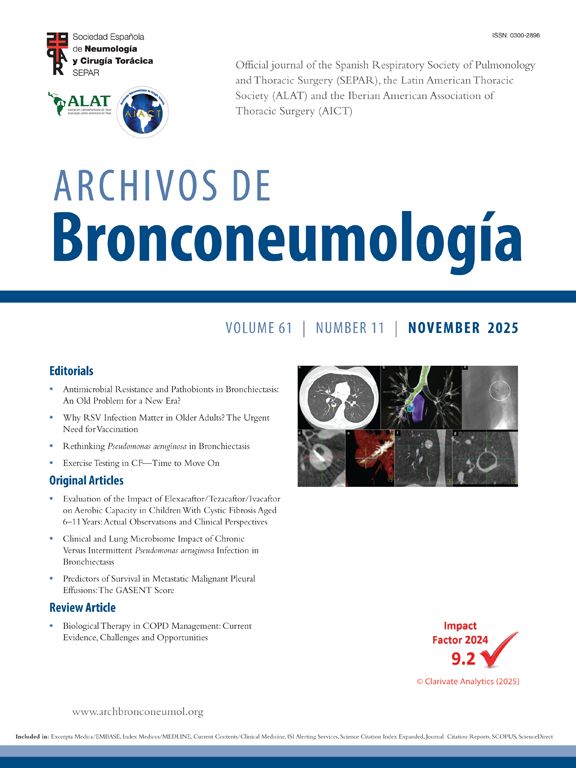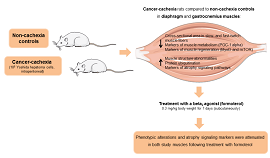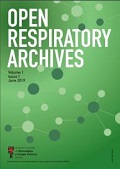Cough is a temporary reconfiguration of the neural processes that regulate breathing and serves as a vital protective reflex that helps to clear irritants and secretions from the airways [1]. In its purest form it is a triphasic event comprising an inspiratory phase in which air is drawn into the lungs, a compressive phase, requiring an expiratory effort against a closed glottis and finally the opening of the glottis and expulsion of air with an accompanying characteristic sound.
From a clinical perspective, cough can be classified according to its duration or pathophysiology. As far as duration is concerned, it is classified as acute (lasting less than three weeks), subacute (between three and eight weeks) or chronic (persisting for more than eight weeks). From a pathophysiological perspective, it can be considered an airway protective reflex, a symptom of a disease, or in some instances as a disease in its own right. In this paper, we will mainly refer to chronic cough (CC), a common phenomenon in clinical practice, and consider the circumstances in which it can be seen as a distinct clinical entity.
When focusing on any clinical condition, it is important to establish its prevalence. The systematic review by Song and colleagues [2] is a milestone in the epidemiology of CC. In a pooled analysis of 90 studies, those authors reported an overall global prevalence of 9.6%. They noted regional differences in prevalence ranging from 3.3% in Africa to 18.1% in Oceania, a finding partly explained by the differences in the definitions used. When the 8-week cut-off duration was applied, the highest rate recorded was 12% (in the UK). When data from different surveys were used, the prevalence found was lower. In the Rotterdam study, Arinze found a prevalence of 10.9% [3], in Canada, Satia found that 7.6% of patients had CC at follow-up [4], while in Germany Virchow [5] found a 12-month prevalence of 4.9% and a lifetime prevalence of 6.5%. Finally, in Spain, Dominguez-Ortega [6] et al. found a lifetime prevalence of 8.2% and a 12-month prevalence of 5.5%. Probably, at least in our geographical area, the prevalence is around 5%.
The first step in the aetiological diagnosis of CC in adults is the evaluation of red flags: that is, signs or symptoms suggesting serious underlying pathology that requires an urgent diagnosis and treatment [7], such as malignancies or chronic lung infections.
The commonest causes of CC classically include three main groups of disease: asthma and eosinophilic bronchitis, post-nasal drip and gastroesophageal reflux [8]. In less common conditions, cough may precede neurological manifestations (e.g., Holmes-Adie syndrome, or the Chronic Cough and Cerebellar Ataxia With Neuropathy and Bilateral Vestibular Areflexia- Syndrome [CANVAS] [9]. Some patients do not respond to treatment, and so two classical denominations have been introduced: refractory chronic cough (RCC) and unexplained chronic cough (UCC). RCC applies to those patients who have been diagnosed with conditions that are suspected to cause CC in which cough persists despite appropriate aetiological treatment. UCC applies to patients with CC in whom an underlying aetiology cannot be identified despite a thorough diagnostic work-up [10]. These patients usually have a normal chest X-ray and spirometry. Recently, in order to overcome the limitations associated with the use of these terms, the concept of cough hypersensitivity has been introduced relatively recently, which may render the terms RCC and UCC obsolete, as it covers them both.
During the last decade, progress has been made in the pathophysiology of CC and, consequently, a new vocabulary has been generated. Researchers and clinicians should understand the meaning of terms like allotussia (cough triggered by stimuli that act at lower thresholds than usual, generating cough in individuals who present this phenomenon but not in healthy individuals; hypertussia (excessive response to stimuli that naturally generate coughing in healthy individuals) and urge to cough (also known as laryngeal paraesthesia, the itching sensation in the airways that does not disappear when coughing). All these terms are related to the cough hypersensitivity syndrome (CHS).
From a practical point of view, two aspects should be highlighted: the importance of measuring the impact of cough, and the baseline investigations that need be performed at a cough unit.
In Spain, a study that used a modified Delphi approach [7] showed agreement among the 77 physicians participating in the survey that the impact of cough should be assessed either by recording simple measures, such as a cough score out of 10 on a VAS, or by more detailed, validated measures of quality of life, such as the Leicester Cough Questionnaire (LCQ) or the Cough-specific Quality of Life Questionnaire (CQLQ). The panel agreed on the importance of estimating cough intensity using a simple index (e.g., a VAS or equivalent numerical scale) and assessing the impact of cough on quality of life [7]. The NEuroCOUGH Delphi paper [11] corroborates this point of view, as it highlights the importance of baseline investigations (chest radiology, spirometry, measures of T2 inflammation i.e., FeNO and peripheral blood) and also recommends the recording of the impact of cough. Emerging technologies such as ambulatory cough recording on wearable devices, artificial intelligence and machine learning will provide an opportunity to measure the burden of cough in terms of frequency, bouts, and intensity over periods of time.
A description of the characteristics of this population can be found in the NEuroCOUGH registry [12]. In the first 945 patients evaluated, cough severity (according to the VAS and the LCQ) was moderate, the mean age was around 60, and the mean duration of cough was 12.5 years. Regarding sex distribution, in the majority of series up to two-thirds (74% in the NEuroCOUGH Registry) were female, with the exception of Virchow's study, in which no sex differences were found. Co-morbidities are frequent, and special attention should be given to urinary incontinence, which was reported in around 44% of female patients in one study and may actually have been more frequent, since only 50% reported it spontaneously [13].
A knowledge of the pathophysiology of the disease is essential in order to understand the strategies available. Each type of cough occurs through the stimulation of a complex reflex arc. Cough is initiated following the activation of sensory nerve receptors which are tailored to detect changes in the physical and chemical environment. These stimuli will cause a depolarization of the cell membrane of nerve fibres and then travel to the cough nucleus located in the brainstem through two different fibres: the A delta fibres (myelinated fibres with a mechano-sensitive and conceptually “protective” function), and the C fibres (non-myelinated fibres with a chemo-sensitive function). Any treatment should avoid blocking the protective fibre response. This peripheral activation projects to the nucleus of the solitary tract and the paratrigeminal nucleus located in the brainstem. These brainstem nuclei give rise both to efferent fibres that lead the response to the periphery (reflex coughing) and to ascending projections towards the higher brain that are needed for the conscious and behavioural elements of cough. Cough response can thus be modulated voluntarily by the higher levels of the brain [14]. Thus, there are two sites of therapeutic intervention: centrally, which includes the cough centres and the higher brain structures that can be targeted with neuromodulatory drugs [15], and the peripherally, where the process of receptor stimulation is initiated. The current view is that CC and CHS arise from processes in which the cough reflex (both peripheral and central) is dysregulated [16,17].
Initially, a great deal of research was conducted on a family of irritable receptors called Transient Receptor Potential (TRP) channels located on sensory nerve endings. Within this family, TRPV1 was found to be increased in patients with chronic cough [18]. The hypothesis of overactivation of this receptor in cough hypersensitivity is plausible, but research has shown that this receptor blockade does not reduce cough [19]. Subsequently, other receptors were investigated. For instance, the P2X3 receptors are ligand-gated ion channels that respond to adenosine triphosphate (ATP) and are almost exclusively localized on C-fibre sensory neurons, which innervate the upper and lower airways and are the main nerve fibres responsible for cough. In some situations, ATP is released. P2X3 receptors are ATP-activated ion channels that consist of three subunits; these may be identical P2X3 subunits or contain a single P2X2 subunit, known as P2X2/3 channels. At that time, the clinical development focused on the P2X3-receptor blockade.
The first marketed drug of this new receptor blockade family is gefapixant. COUGH 1 & 2 were phase 3 randomized double-blind placebo-controlled studies [20] that lasted 12 and 24 weeks with an extension period up to 52 weeks in both cases. The results showed a decrease in the number of cough episodes as well as an improvement in quality of life. Although the differences from placebo were statistically significant, a large placebo effect was nonetheless observed. The drug was well tolerated, with the most common side effect being dysgeusia.
What can we expect in the near future? On the one hand, current research is focused on the development of new P2X3 receptor inhibitor molecules, whilst on the other, it is reasonable to think that combined therapies that act at both peripheral and central levels may be implemented. It will be exciting to see what the future holds.
Conflict of interestsC.D. declares having received financial aid for travel support and speakers bureaus from Novartis, Sanofi, GSK, TEVA, MSD, Esteve, Almirall, AstraZeneca, Chiesi, Menarini, Pfizer, Ferrer, Stallergenes, ALK-Abelló, Allergy therapeutics, Hall Allergy, Inmunotek and Roxall.
A.C.-L. has received fees in the last 3 years for talks at meetings sponsored by AstraZeneca, Chiesi, GlaxoSmithKline, MSD, Orion Pharma, Zambón, and Sanofi-Regeneron, has received travel and attendance expenses for conferences from Gebro, GlaxoSmithKline, Sanofi-Regeneron, and has received funds/grants for research projects from several state agencies, non-profit foundations, AstraZeneca, and GlaxoSmithKline, MSD.
L.M. is the chief investigator of the ERS NEuroCOUGH Clinical Research Collaboration. He has received consulting fees from Bayer, Bellus, GSK, Merck, NeRRe, Nocion, and Trevi; lecture fees from Chiesi, GSK, and Merck; and grant support from Bayer, Bellus, Chiesi, Merck, and Shionogi outside the submitted work.









